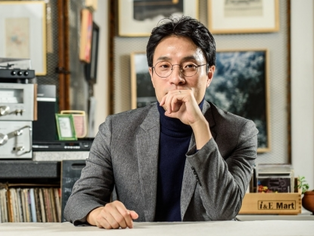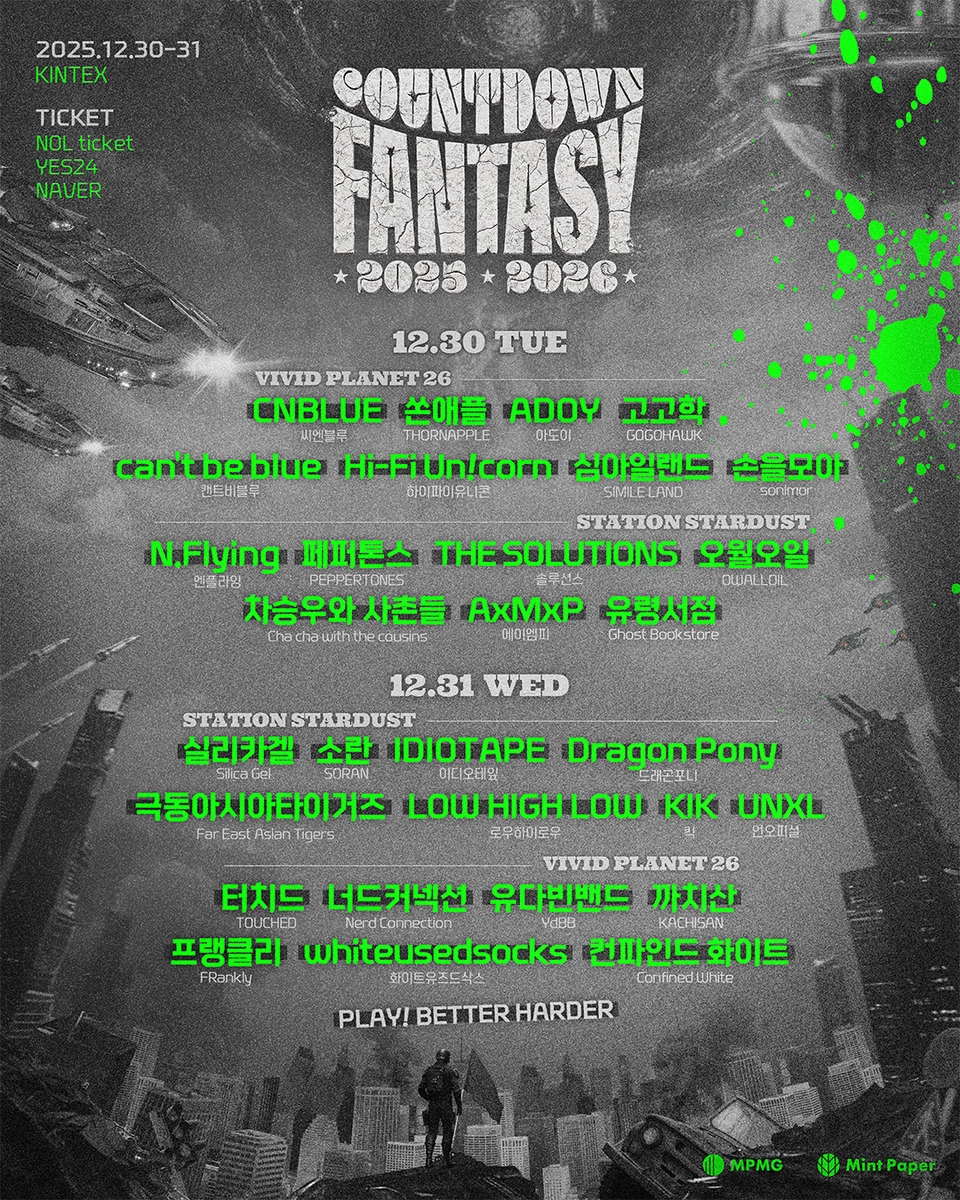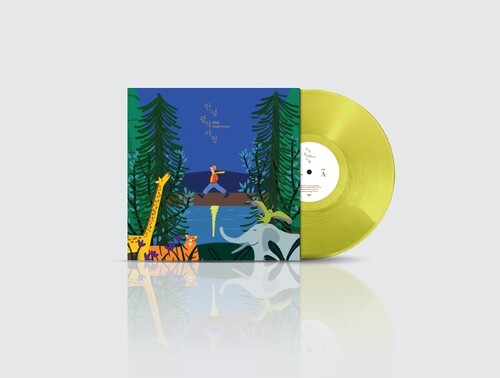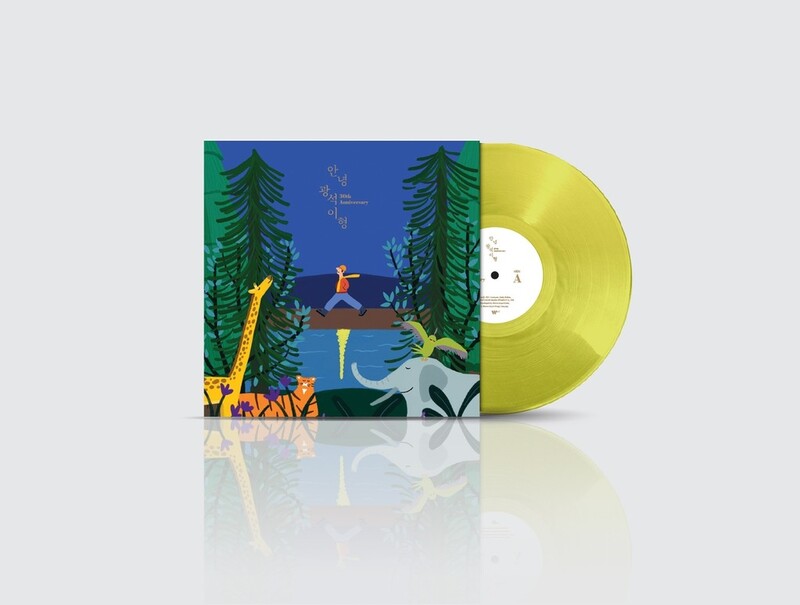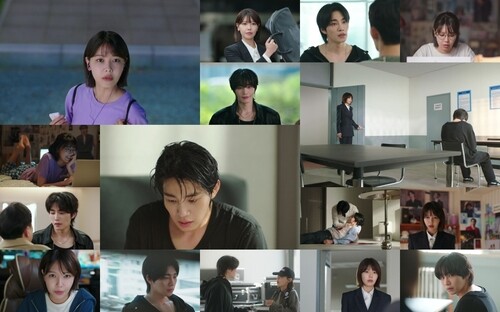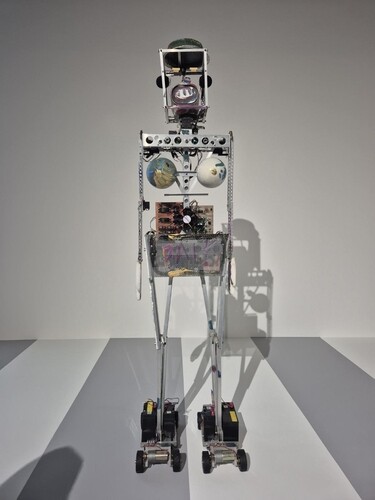 |
| ▲ "Robot K-456" is displayed at the exhibition "Paik Nam-june, Paik Nam-june, and Paik Nam-june," which opened on November 30, 2024, at the Busan Museum of Contemporary Art. (Yonhap) |
BUSAN, Dec. 2 (Yonhap) -- Paik Nam-june (1932–2006), renowned as the "Father of Video Art," has often been more celebrated abroad than in his home country.
From his retrospective at the Whitney Museum in 1982 to the solo exhibition at the Guggenheim Museum in 2000, Paik gained international acclaim. Notably, he won the Golden Lion award at the 1993 Venice Biennale, representing Germany.
Despite several major posthumous exhibitions overseas, including shows at the Kunstpalast Düsseldorf (2010), the Smithsonian American Art Museum (2012), and Tate Modern in London (2019), comprehensive displays of his work in Korea have been rare.
Against this backdrop, the Busan Museum of Contemporary Art’s exhibition "Paik Nam-june, Paik Nam-june, and Paik Nam-june," which opened on Nov. 30, stands out as the largest posthumous retrospective in Korea. Featuring 160 works, including loans from the National Museum of Modern and Contemporary Art (MMCA), Ulsan Art Museum, and Germany's Museum für Moderne Kunst, the exhibition offers a thorough look at Paik’s oeuvre, from his early to late years.
The exhibition begins with "Hand and Face (1961)," where a young Paik uses his hands to obscure and reveal his face. His involvement with the avant-garde group Fluxus is explored through performance artifacts, such as photographs from "the Fluxus Champion Contest (1963)."
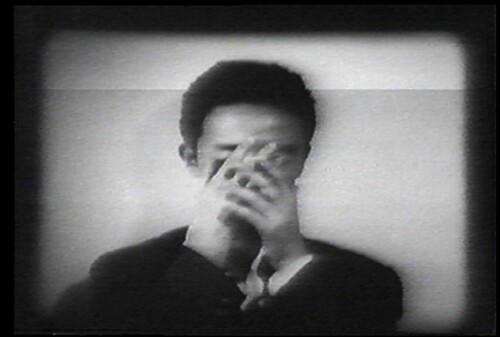 |
| ▲ This image, provided by the Busan Museum of Contemporary Art, shows "Hand and Face" displayed at the exhibition "Paik Nam-june, Paik Nam-june, and Paik Nam-june," which opened on November 30, 2024, at the museum. (PHOTO NOT FOR SALE) (Yonhap) |
Among television arts are blue-hued gallery showcases key works like "Magnet TV (1965)" and the iconic TV Buddha series. Also on display are TV Cello, created with cellist Charlotte Moorman, and the Paik-Abe Video Synthesizer, which introduced revolutionary video manipulation techniques.
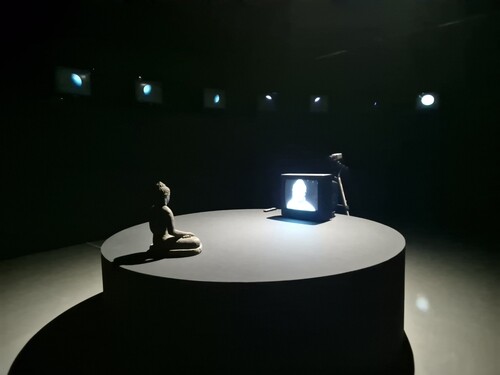 |
| ▲ "TV Buddha" is displayed against the backdrop of "Moon Is The Oldest TV" at the exhibition "Paik Nam-june, Paik Nam-june, and Paik Nam-june," which opened on November 30, 2024, at the Busan Museum of Contemporary Art. (Yonhap) |
Key installations include a recreated "Cage’s Forest-Revelation of the Forest (1993)," honoring Paik's mentor, John Cage, with 12 tree-like structures adorned with monitors. Nearby, the Gulliver installation, inspired by Jonathan Swift’s novel, captivates visitors.
A variety of Paik's robots, including the family-themed "Robot Family series" and "Robot K-456," are displayed. A highlight is "Chinggis Khan’s Lottery," shown at the 1993 Venice Biennale.
The exhibition concludes with "Three Elements (2000)," a laser installation of "Circle," "Square," and "Triangle," and "108 Agonies (1998)," which combines 108 television monitors to depict themes from Korean history and culture alongside popular icons like Seo Taiji and Boys.
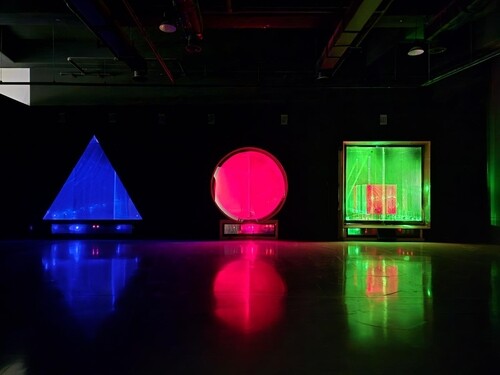 |
| ▲ "Three Elements" is displayed at the exhibition "Paik Nam-june, Paik Nam-june, and Paik Nam-june," which opened on November 30, 2024, at the Busan Museum of Contemporary Art. (Yonhap) |
Complementing the physical works, the museum’s cinema screens 15 video pieces, including "Paik Nam-june: Edited for Television (1975)" and "The Tiger Lives (1999)." The 2022 documentary "Moon is the Oldest TV" is also featured.
Busan Museum Director Kang Seung-wan emphasized the significance of this ambitious endeavor, stating, “This exhibition marks a pivotal moment in presenting Paik Nam-june’s legacy in Korea. I hope it sparks further opportunities to showcase his work.”
The exhibition runs through March 16, 2024, with free admission.
(C) Yonhap News Agency. All Rights Reserved







